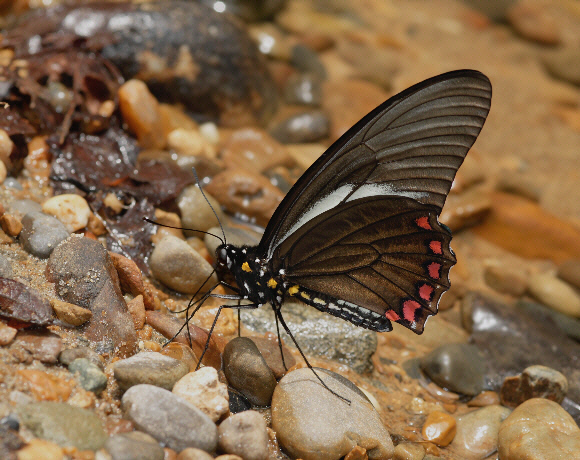
Introduction
Battus, and the related genera Parides and Euryades are not true Swallowtails, but are members of the Troidini, the same tribe to which the giant Ornithoptera Birdwings of Papua New Guinea belong.
There are 12 Battus species most of which are confined to tropical and sub-tropical areas of Central and South America. Two species however – polydamas and philenor, have ranges that extend into the southern United States.
The upper wing surface of Battus species is similar to the underside but has a slight greenish sheen and lacks the submarginal red spots.
Battus crassus occurs throughout much of Central and South America from Costa Rica to Bolivia and Argentina.
Habitats
This species occurs in primary rainforest and cloudforest habitats at altitudes between 0-800m.
Lifecycle
The eggs are laid in clusters of up to 80. The caterpillars live gregariously, and feed on Aristolochia vines. These plants contain toxins which are sequestered by the caterpillars and passed to the adult butterflies.
Adult behaviour
Males are usually encountered as singletons. They can often be seen imbibing mineralised moisture from dry river beds or from the edges of small streams. Both sexes nectar at Vochysia and Hamelia. In common with most other Papilionidae they tend to rapidly flutter their wings for several minutes when first settling to feed, but if undisturbed eventually settle down with their wings held erect. The adults are unpalatable to birds.
